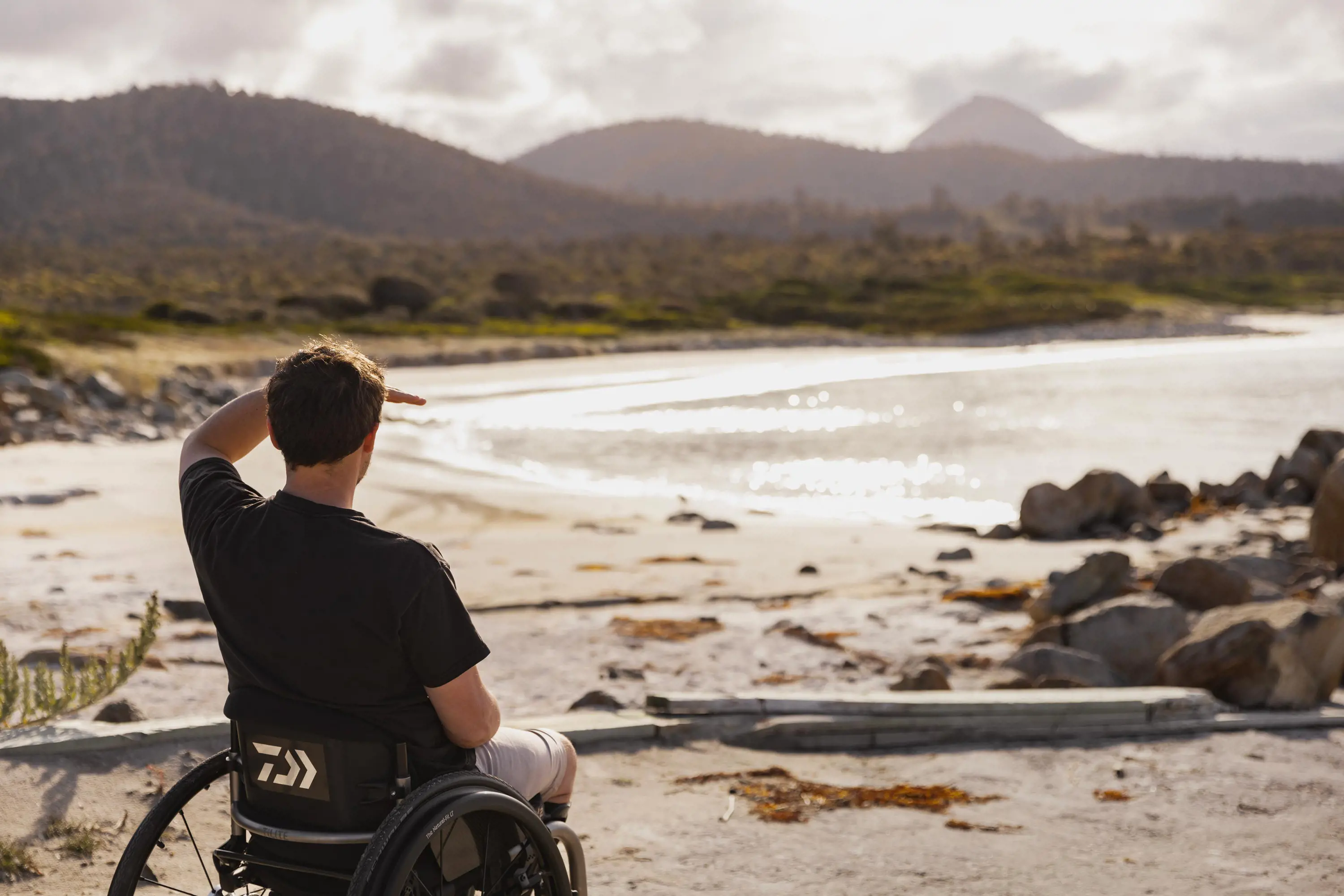Equal access means an easy and fun holiday for everyone.
Here are some tips when planning a trip to Tasmania.
Vacayit
Listen to our Discover Tasmania audio guides for blind and low vision travellers, featuring detailed accessibility information relevant to visitors with disabilities, including mobility and intellectual-related disabilities. Our audio guides and written transcripts showcase a rich variety of Tasmanian experiences: journey deep into the forest along the West Coast Wilderness Railway; unearth tumultuous convict stories at Port Arthur Historic Site and Brickendon and Woolmers Estates; and discover pristine places within the Tasmanian Wilderness World Heritage Area, including Strzelecki, Douglas-Apsley and Cradle Mountain-Lake St Clair National Parks.
Find even more in-depth audio guides – 50, to be exact – on the free Vacayit app, Australia’s first and only audio-based tourism platform for blind and low-vision travellers. Tap into Tasmania’s restaurants, farm stays, distilleries, adventure experiences, cruises, hikes, markets, festivals and heritage sites. Tourism Tasmania is the first Australian tourism destination to work with Vacayit to create accessible voice guides, which feature rich sensory descriptions about the island’s beautiful places – handy to listen to before or during your visit.
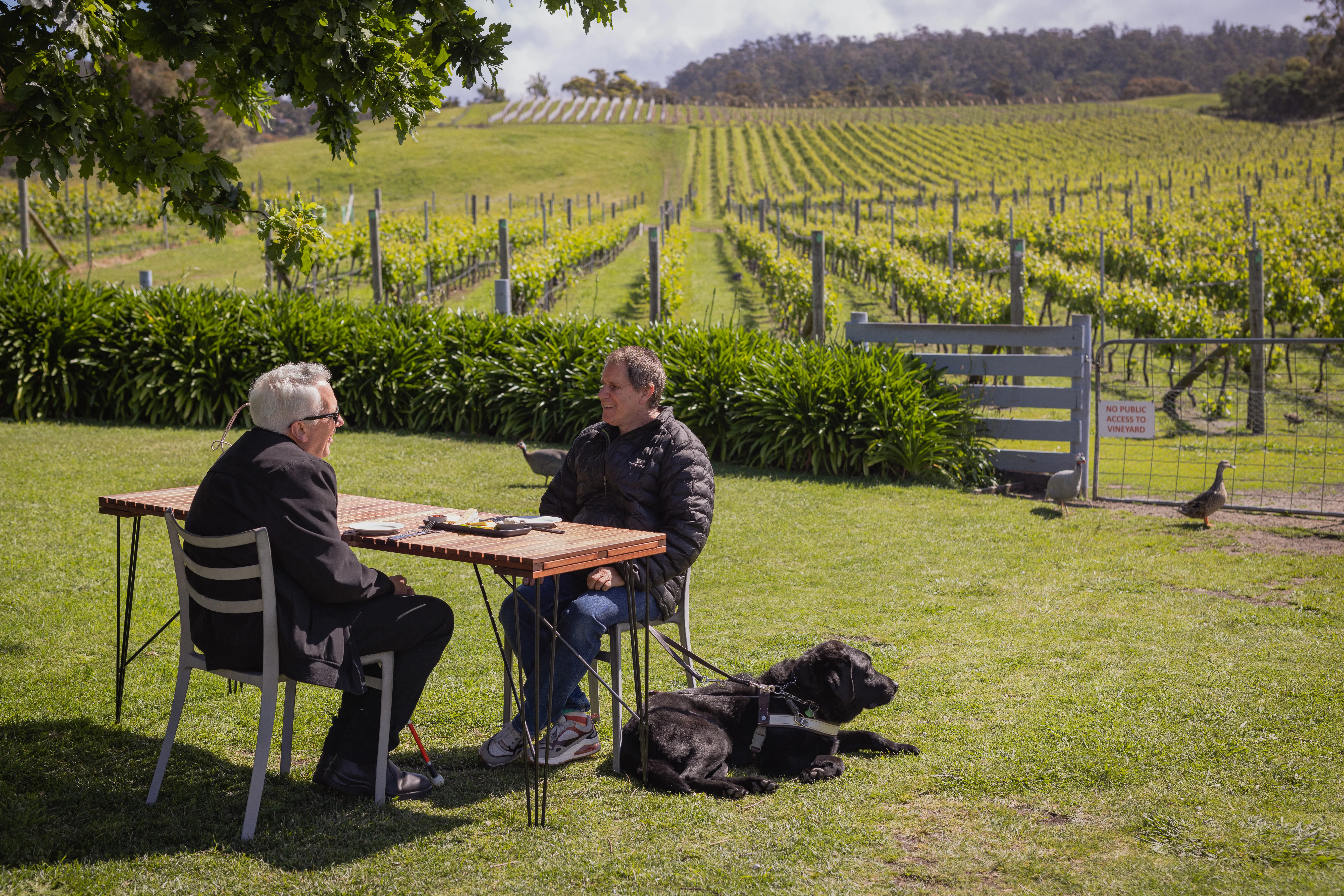
Wheelchair-accessible attractions and venues
Discover a plethora of popular wheelchair-accessible experiences in Tasmania. Hobart’s Royal Tasmanian Botanical Gardens has pram-friendly and accessible paths, and offers a one-hour guided tour with a buggy. The Cascades Female Factory Historic Site in Hobart and Port Arthur Historic Site on Turrakana / Tasman Peninsula have wheelchair accessibility for most of the attractions on site; check with visitor services staff on arrival. In the north, Beaconsfield Mine and Heritage Site has good access throughout and viewing platforms.
Most art galleries and museums provide equal access to visitors, including the Queen Victoria Museum and Art Gallery in Launceston, and the Tasmanian Museum and Art Gallery, Mawson’s Huts Replica Museum and Maritime Museum in Hobart. Also in Hobart, most of Mona is accessible, and there’s a wheelchair-accessible bus, accessible parking and a lift in the main building, along with an accessible tunnel entry if arriving via ferry.
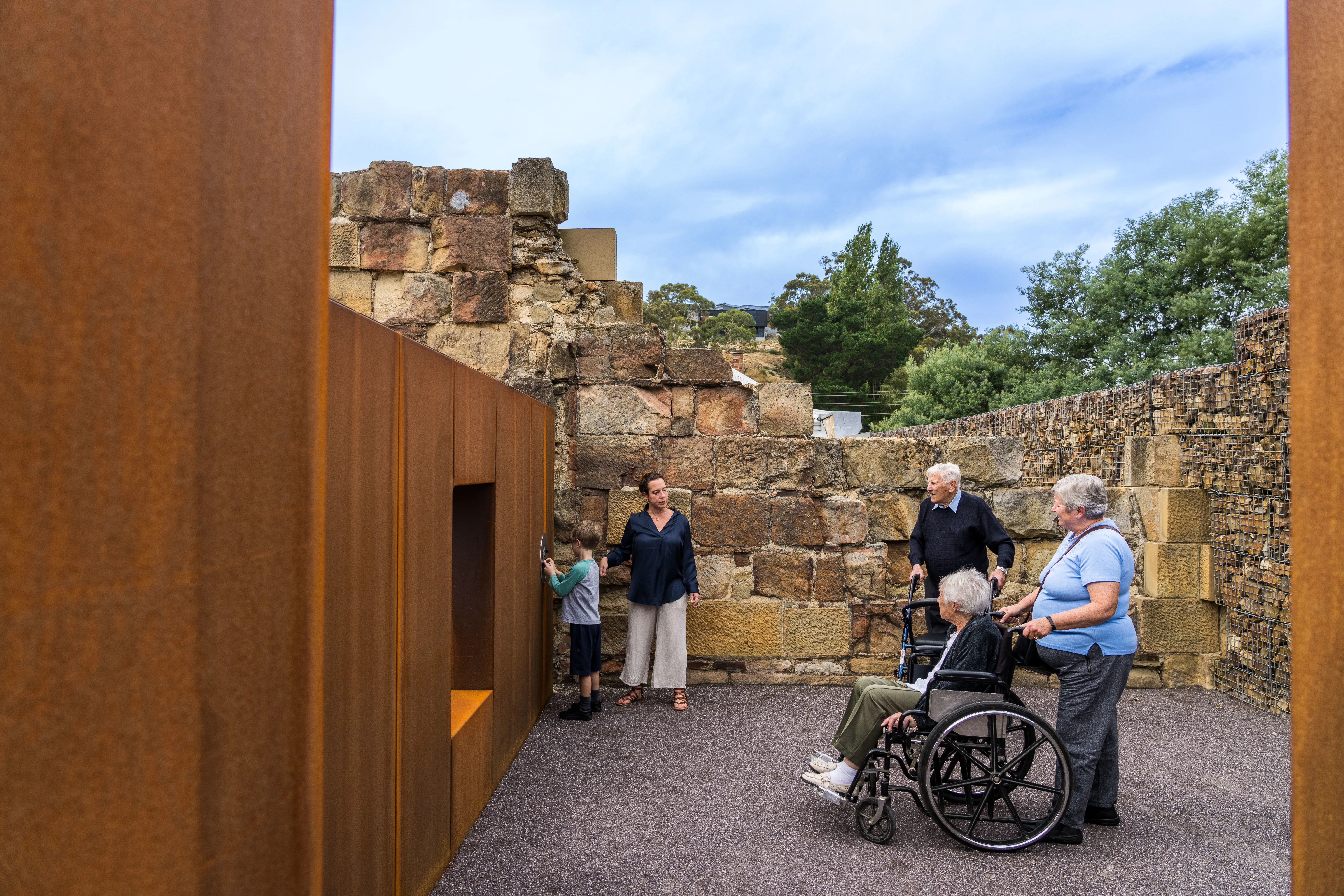
For wildlife encounters, head to beauty point where Seahorse World has no stairs and Platypus House has ramps throughout. The Salmon Ponds and hatchery at Plenty is a level site and has platforms available to fish for trout; phone ahead to check availability. Encounter Tasmanian devils feasting at Devils@Cradle in Cradle Mountain; there are ramps and the staff are happy to help. Bonorong Wildlife Sanctuary near Hobart offers free entry to people who use wheelchairs. The top half of the property is accessible, however where the gradient changes some assistance may be required.
Salamanca Market and the waterfront precincts in Hobart and Launceston have taken special care to allow easy access for people using aids of all types.
For more information on the many additional accessible attractions and venues across the state, enquire directly with individual operators.
National parks and reserves
Accessible tracks allow visitors to explore beautiful tracts of wilderness within Tasmania’s parks and reserves. From the most photographed waterfall in Tasmania, Russell Falls, and the riverbanks of the renowned Franklin River to groves of rare endemic pencil pine (Athrotaxis cupressoides), there’s much to explore across the state.
Several national parks and forest reserves are equipped to provide access to people who use a wheelchair. Motorised wheelchairs and scooters are permitted in national parks and reserves. Tracks designed for ease of access to visitors with mobility-related disabilities include the Russell Falls track in Mount Field National Park in the south, the Cape Tourville track in Freycinet National Park on the east coast, and the Cradle Mountain Rainforest Walk in the north west.
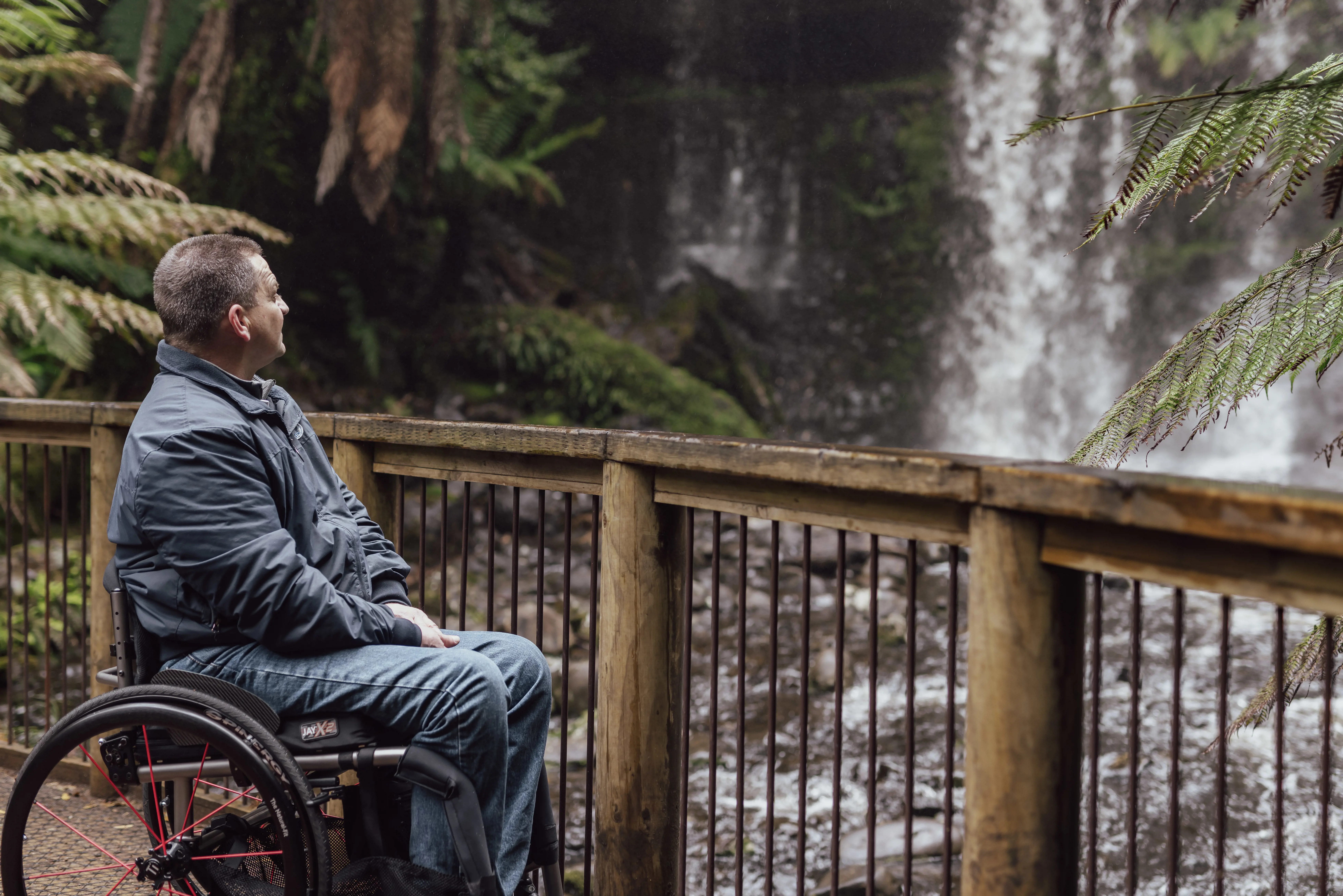
TrailRider all-terrain wheelchairs are available to hire at several Tasmanian parks, enabling travellers to explore more rugged tracks. There is no hire charge, but bookings are required in advance at the relevant Tasmania Parks and Wildlife Service visitor centre. Two or more people who are reasonably fit are required to carry the TrailRider, and travellers are asked to bring a helmet and complete a short induction before using the equipment. The TrailRiders feature adjustable seating and supports suitable for adults and children. Contact the relevant visitor centre for bookings or more information.
Trained dog guides assisting people who are blind or have low vision are permitted in national parks. Please obtain a permit for your dog guide and carry this identification on your person when visiting the park, and – where applicable – advise Tasmania Parks and Wildlife Service staff of the dog’s presence on arrival. For enquiries about other assistance animals, or to obtain a permit, call or email the Tasmania Parks and Wildlife Service ahead of your visit via parkfees@parks.tas.gov.au.
For a comprehensive list of accessible parks in Tasmania, visit Tasmania Parks and Wildlife Service and type ‘access friendly’ into the search bar.
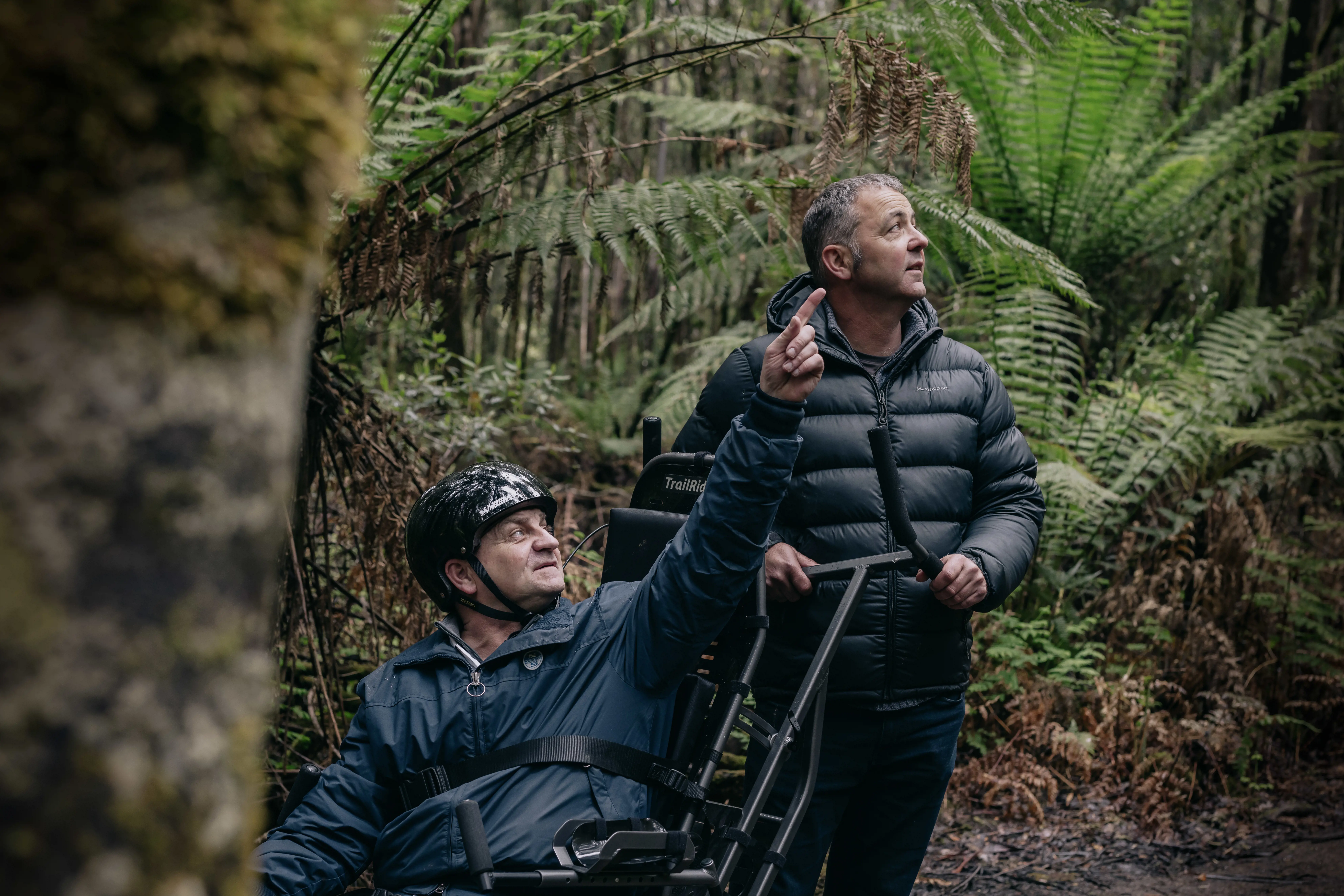
Dog guides or assistance dogs
ForTasmania has guide dog and hearing dog access laws governed by the Guide Dogs and Hearing Dogs Act 1967. Accredited animals assisting people who are blind, have low vision or are hard of hearing are entitled to full access rights to all public places and public passenger vehicles under the legislation. Rare exceptions include tours of interactive areas in zoos and certain food preparation facilities. These access rights extend to accredited autism assistance dogs. Carry your identification card and accreditation paperwork with you during your visit. More information is available via the Tasmanian Government Contact Centre on 1300 135 513, or by searching ‘Tasmania guide dogs access rights’ online.
To prevent the spread of brown dog tick and hydatid disease, Tasmania has unique biosecurity procedures for travelling dogs. Handlers of assistance animals arriving in Tasmania from other Australian jurisdictions are required to present accreditation paperwork upon entry and complete a biosecurity declaration to confirm the dog is tick-free and exempt from worming requirements. Contact biosecurity.tasmania@nre.tas.gov.au or call 03 6165 3777 for further information and updates.
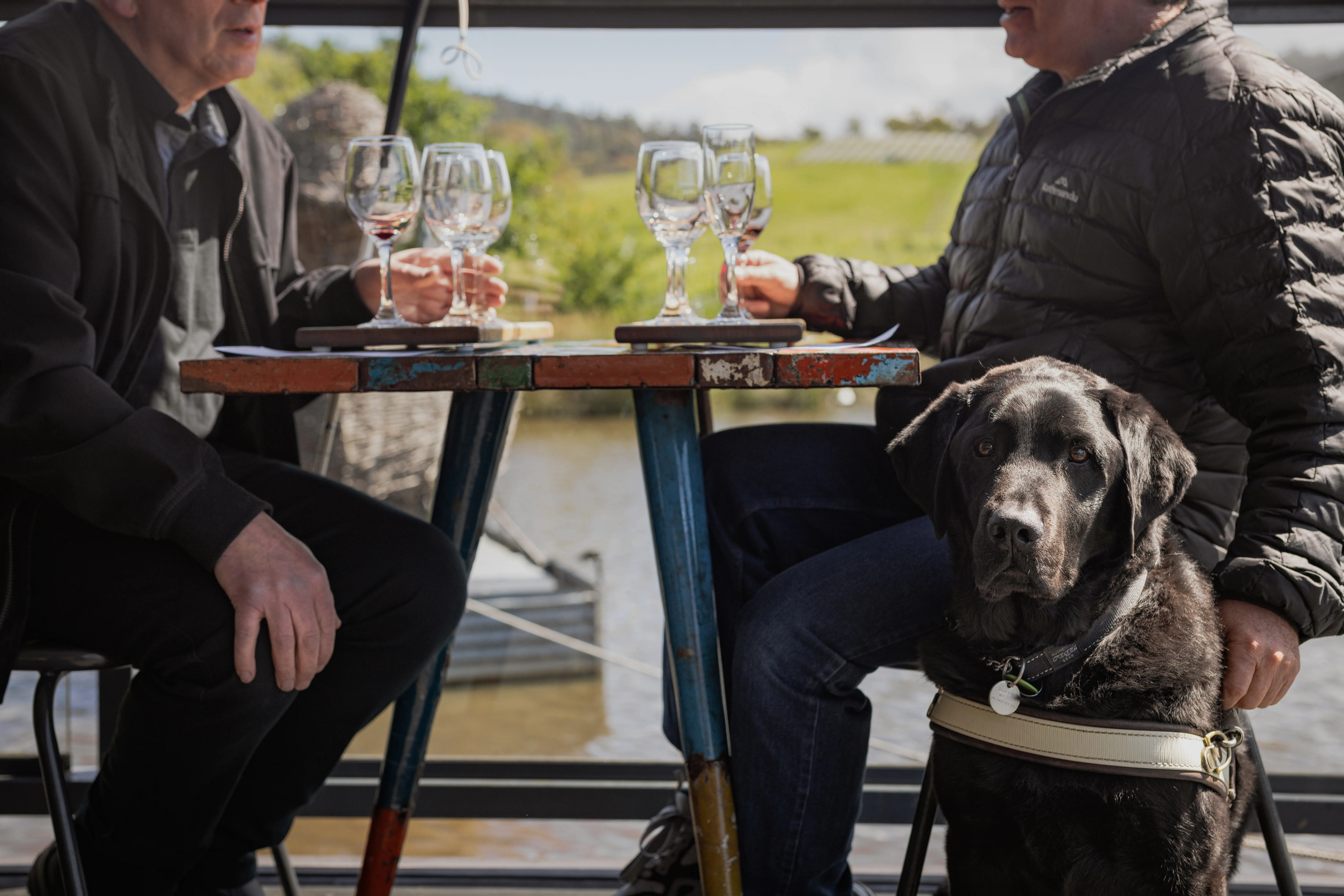
Accommodation
Find a diverse array of equal-access accommodation venues across Tasmania. On the east coast, Freycinet Lodge has two one-room cabins with wheelchair access, plus a Lodge King room with extensive accessibility options. Hotel Grand Chancellor Launceston has a spacious room and ramp access from the car park. Stewarts Bay Lodge on Turrakana / Tasman Peninsula has fully self-contained accessible rooms. On the west coast, Strahan Holiday Retreat has a two-bedroom cabin with parking directly in front. In Hobart, MACq 01 and Vibe Hotel are just a few of the places that have equal-access rooms.
Other outdoor-based accommodation providers welcome people with access requirements, such as Little Beach Co Glamping on the east coast.
Get in touch with individual accommodation operators to find out more, or find more accessibility information by perusing the many types of stays listed on discovertasmania.com.au – from hostels to resorts, farm stays and apartments.
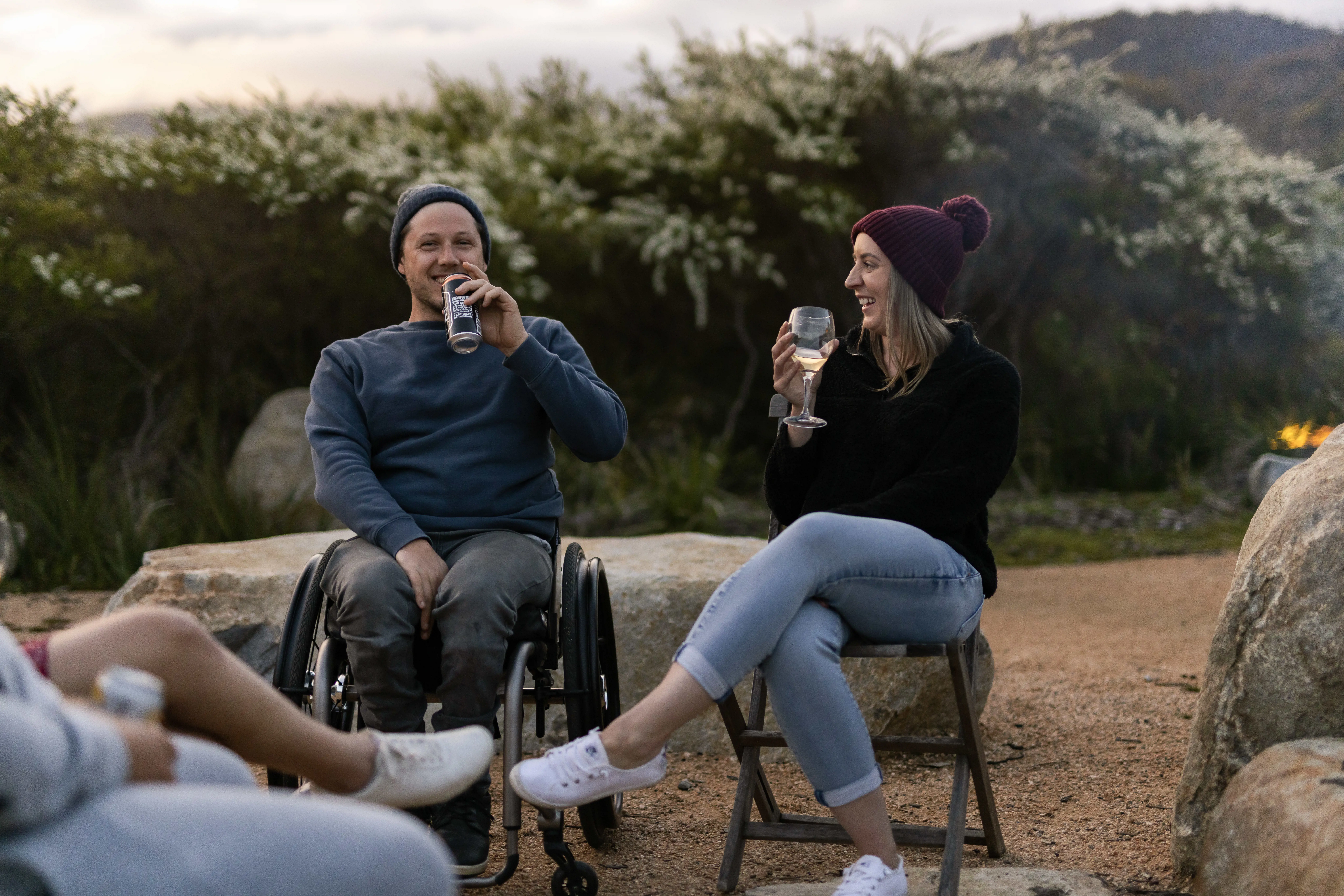
Companion cards
Many of Tasmania’s attractions and experiences offer free carer entry to people with lifelong disabilities who possess an Australian Companion Card. Find a list of relevant tourism operators via the Companion Card website.
Transport
For a self-drive journey, some car-hire companies have hand-control hire cars. Check availability when organising your holiday – cars are heavily booked in Tasmania.
The City of Hobart’s city centre mobility map has information about disability access parking zones and toilets, steep gradients, audio-tactile traffic light controls and rest spots around Hobart. A print version of the map is available at the Hobart Council Centre on the corner of Elizabeth and Davey streets, or download here.
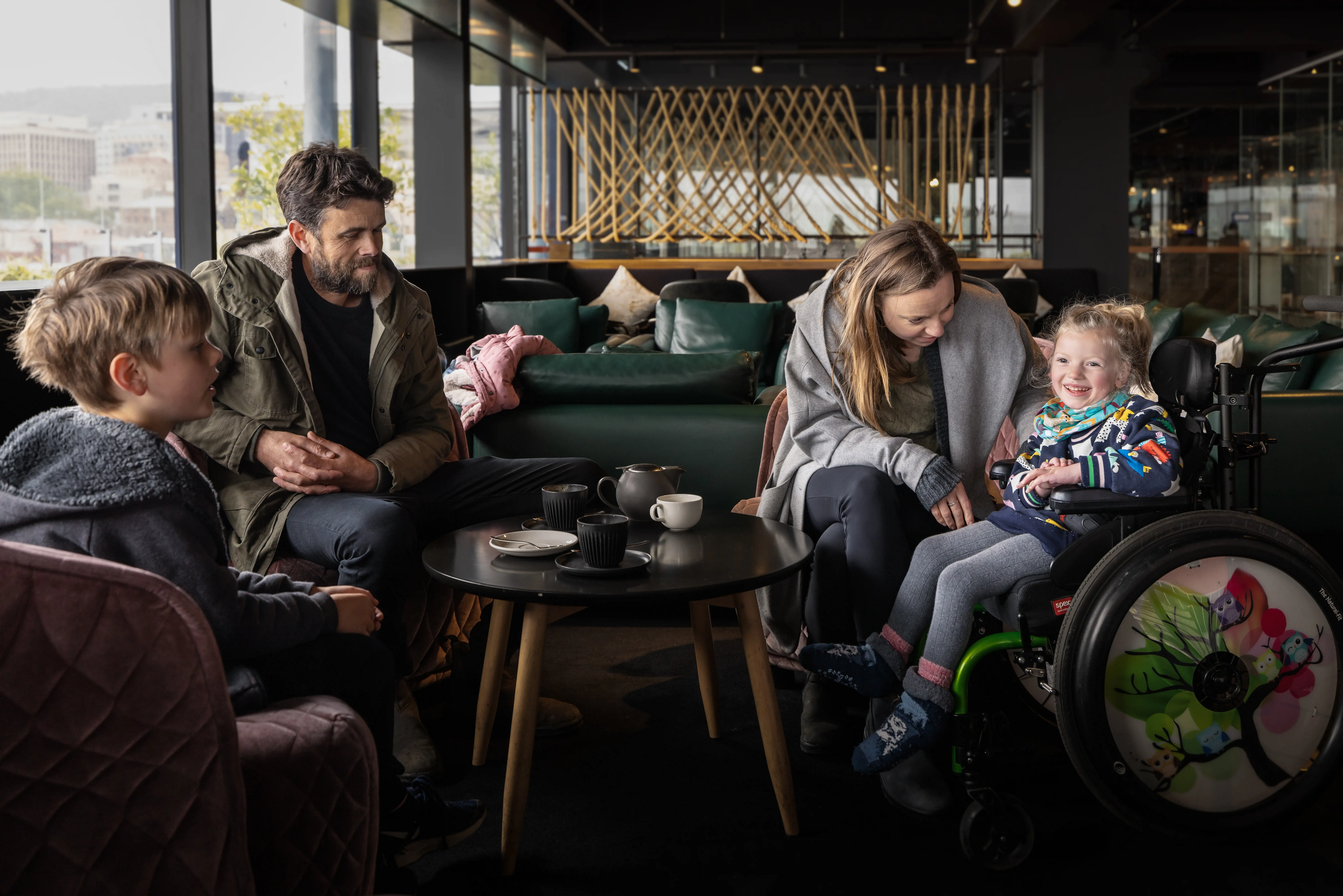
Wheelchair hire is available from the City of Hobart car park at 38 Argyle St, where accessible parking bays are also offered. For more information or bookings call 03 6238 2780.
Tassielink Transit offers step-less entry buses – contact the office to ensure a bus is available on the selected route. Metro bus timetables feature a wheelchair icon to indicate services that have wheelchair access. 13cabs has wheelchair-accessible taxis. There are no passenger train networks in Tasmania.
Tour companies that offer wheelchair access include McDermott’s Charter Coaches and Tours Around Tasmania. The Red Decker Company and kunanyi / Mount Wellington Explorer Bus sightseeing tours also have wheelchair-accessible buses. Phone ahead to check the tour company’s access options.
Traverse the island with the added feature of commentary and insights provided by locals and experts on one of Tasmania’s many immersive guided tours. Get in touch with individual tour operators to find out more about accessibility requirements.
View more helpful information on how to travel to, or travel within, Australia’s only island state.
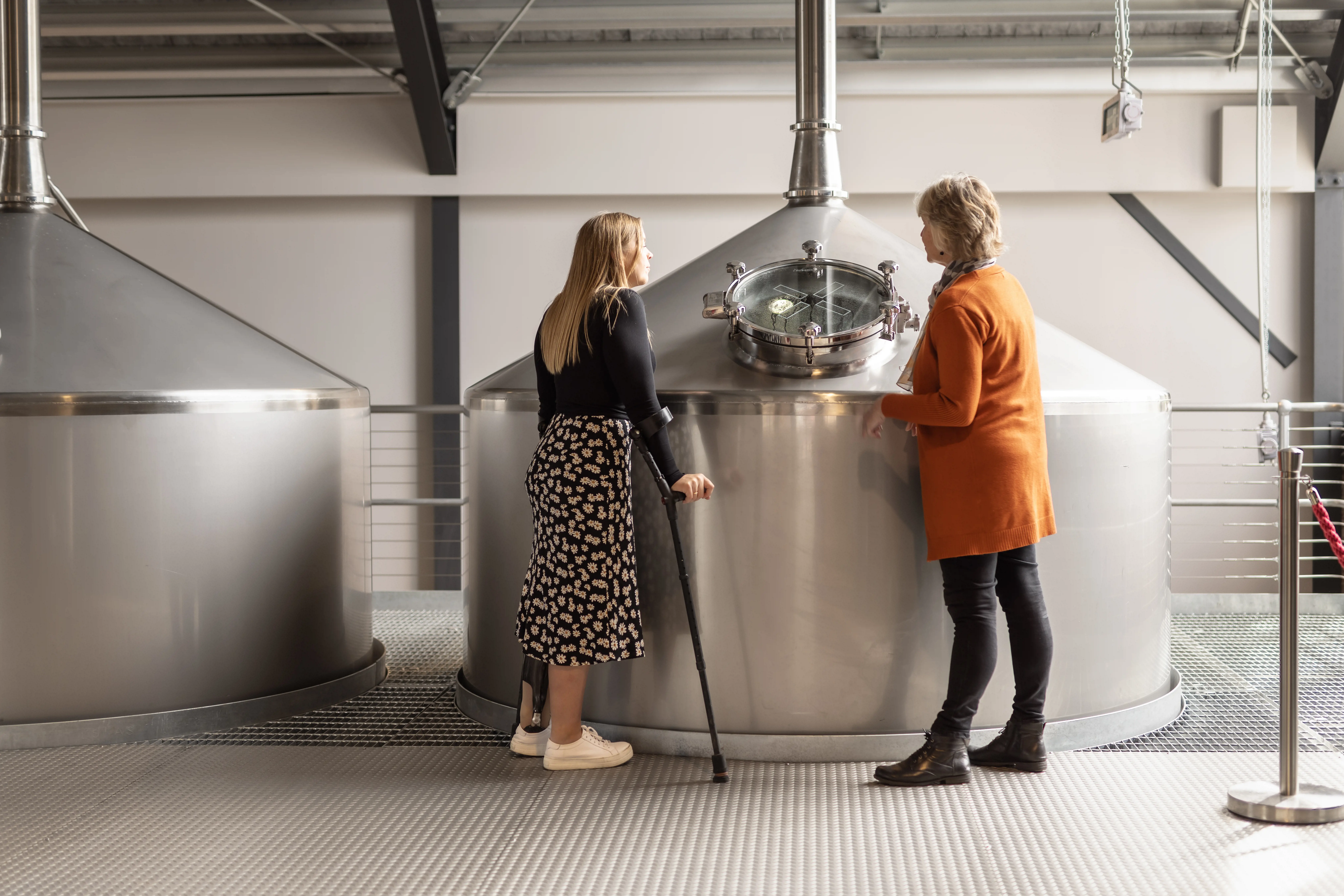
More information
There Call in at a Visitor Information Centre – look for the blue and yellow ‘i’ sign – for advice, maps and equal-access travel information. Accredited visitor information centres are open daily.
Contact the Tasmanian Visitor Information Network.
